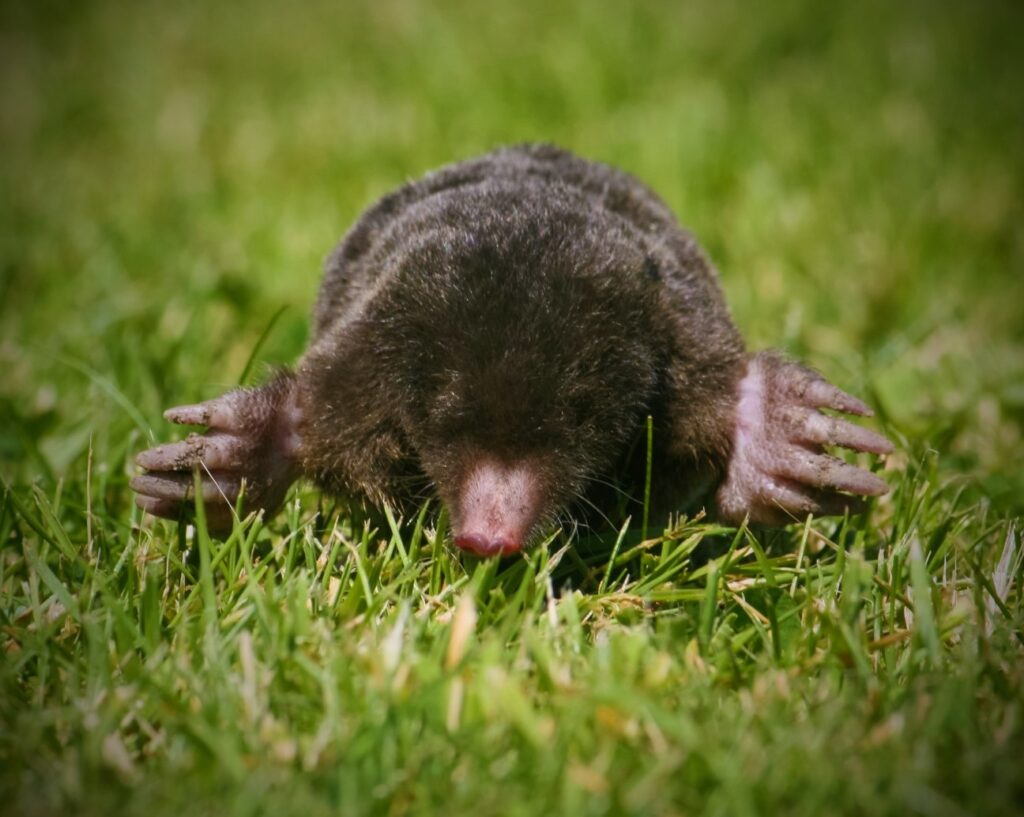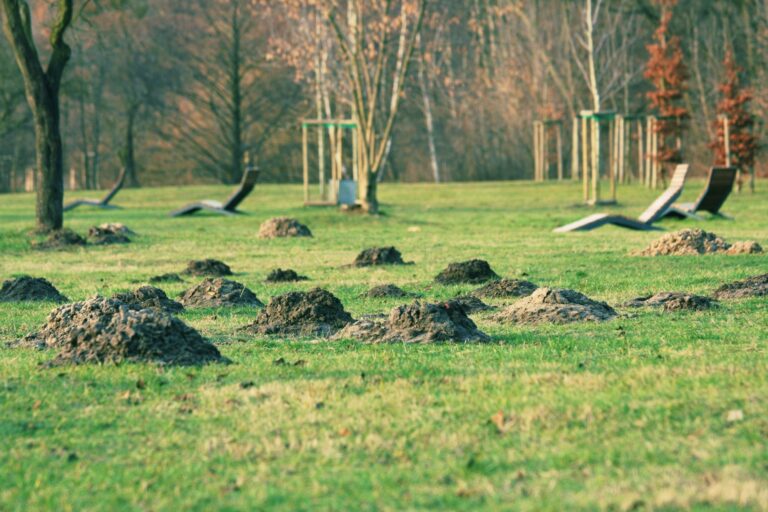 Are Moles Bad To Have In Your Yard?
Are Moles Bad To Have In Your Yard?
You cannot be mistaken to know that a mole has invaded your lawn or garden. You’ll quickly notice multiple piles of soil – mounds that resemble a small volcano where the soil clumps are thrown out through the center and rolled down on all sides.
Moles, the extraordinary small mammals, spend half of their lives underground searching for food, beneath those annoying mounds of soil. In nature, they are woodland animals but can quickly take over and spread through adjacent lawns in residential properties. And the longer you allow moles to tunnel in your yard, the more difficult they become to control.
Although it’s not very likely to see them above ground, the hills and tunnels a mole leaves behind can be real eyesores in your yard. Not only will the molehills look like an unsightly lawn mess, but will also devastate your landscaping. The hills, however, are just a by-product of the animal’s industrious digging. The tunnels can do major damage to your lawn.
Mole burrowing activity varies throughout the seasons. The lawn damage is usually most noticeable during spring and early summer, but also in the fall. This is when moles are most active and are closest to the surface. In summer, the damage usually subsides when the soil dries out and moles excavate mostly at a deeper level.
Luckily, a mole is mostly a solitary, unsocial, and highly territorial animal, so if you eliminate one mole, most likely there isn’t another one nearby. If you find an elaborate sequence of tunnels, it probably is just one mole that is a very active builder. However, new moles can move into existing, abandoned tunnels within 24 hours.
How Long Will Moles Live in the Yard?
In general, moles have small home ranges and the animal will rarely stay in the same area for a longer period of time. Their activity in a particular area may only last one or two weeks until there’s no more food to be found. So, once all the local soil insects have been eaten, the mole will move on to a better hunting ground.
Are Moles Bad To Have in Your Yard?
Despite the damage that moles cause to a yard, they are not that bad. In fact, they are mostly good, bringing lots of benefits to your lawn.
In terms of damage done to your yard, moles are usually blamed for eating bulbs and the roots of ornamental plants. Although they can cause havoc with their burrowing and mounding, moles do not gorge on homegrown produce.
In fact, voles, chipmunks, and mice are the real culprits. Mole runways can be used by rodents that feed on bulbs, seeds, and roots, and these rodents will cause direct damage to your lawn, garden, or fruit orchard.
What Do Moles Eat?
Moles are insect eaters. Their diet consists primarily of earthworms, but grubs, beetles, snails, slugs, spiders, centipedes, and other bugs are also on the menu. On average, a mole consumes 40 pounds of insects per year. The mole’s main food source are earthworms, and the animal will eat about six big worms every day.

Do Moles Damage Your Yard?
Without a doubt, moles can locally be destructive.
They push mounds of soil to the surface and their tunnels create holes and weak spots in the lawn. The burrowing results in lines of raised ridges in the ground and ugly-looking mounds of soil.
They create easily noticeable trails of dead grass throughout the yard. When moles burrow close to the surface, it can cause harm to grass roots, leaving behind brown patches.
While tunneling for insects, moles can disrupt the roots of vegetables and other plants, and uproot turf. Their shallow tunnels will lift the soil and allow plant roots to dry out. Their digging through root systems of plants can kill the seedlings and expose bulbs and roots to the surface.
Their runways provide underground routes for other rodents searching for food. Their tunnels may suit other pests that will go after plant roots.
The molehills can be dangerous to walk over and might result in trips and falls. Mole burrowing activity will create holes in the lawn and a tunnel can easily cave in when accidentally stepped on, which might lead to your injury.
Benefits of Moles in Yard
On the other hand, we must not forget that moles are great contributors to the ecosystem.
If you have moles in your yard, it means you have healthy, rich soil, as these animals will feed on any earthworms and pest insect larvae found in the soil.
Moles will also eat grubs that are harmful because they destroy grass roots, and also beetles that feed on decorative plants. They effectively eliminate ants, snails, and termites.
Moles are known as natural aerators. They dig underground tunnels which loosen soil and form channels for air and water to move freely through the soil, which helps plant growth. Thus, mole tunnels promote the health of the soil by turning, aerating, and draining it, and fertilizing and mixing its nutrients.
To Conclude,
Trapping moles can be labor-intensive even if there’s just one mole to catch. There is no one-time solution to control moles, it is a process that requires continuous maintenance.
So if you’re not willing to battle the moles by yourself, your best bet is to hire an experienced exterminator in your area. You’ll want someone who can provide expert advice and can create a mole removal strategy that is effective and humane.
Give Westchester Wildlife an opportunity to prove what a professional mole control company can do for you. And all you’ll have to do is relax and let us deal with your mole problem.
